Over the past six years, Bruce Bickford has been integral in building Brunswick-based STARC Systems into an international supplier of innovative containment systems that reduce the disruption caused by construction and renovation projects.
The company has provided its products to customers in all 50 states and several countries. Its customers have included Brigham & Women’s Hospital, the Cleveland Clinic, LaGuardia Airport, and Harvard University.
Tim Hebert, owner of Hebert Construction in Lewiston, founded STARC Systems in 2012 after recognizing there was a need for better containment systems during construction and renovation projects in the healthcare industry. He met Bickford in 2013 and, recognizing his complementary experience and skill sets, brought him on as a co-founder. Bickford would build the company and run the day-to-day operations while Hebert focused on his construction company. The company logged its first sale in 2014 and raised $3.4 million from investors in 2017. That year it also brought on Chris Vickers as CEO, at which time Bickford assumed the chief operating officer title.
The company, which began in Bickford’s garage, is now spread across four buildings at Brunswick Landing and employs 58 people. This year it released its first new product since being founded, its new LiteBarrier wall system, and expects to release its third product in 2020. The company’s 2020 roadmap also includes increasing sales by 60% and moving into a new 45,000-square-foot manufacturing facility, which will be the company’s third move in five years, according to Bickford.
Maine Startups Insider spoke with Bickford about his entrepreneurial background, his experience building STARC, and what entrepreneurs need to keep in mind if they want to be successful. The interview has been edited for length and clarity.
MSI: What was your first entrepreneurial experience?
Bickford: I first struck off on my own in 1989, launching an independent product design business. I left a large aerospace company with great pay and benefits after having just bought our first house, which needed a total renovation. My son was under two and a second son on the way. And I did this with a soft commitment from a customer for six months of work. This quickly developed into a design/build operation, focusing on building one-off custom automation testing and assembly machines for local manufacturers like Casco Products and Loctite. I grew the business with close collaboration of two other partner companies and had eight employees at about the five-year mark. The recession of ’98 ran me out of cash and I moved on to working for a customer who had a VC startup that had just launched.
When you first founded your company, did you feel prepared to build a business?
Regarding my first company: I felt confident enough with my technical skills that I could make more money and follow my interests if I started off on my own. I did not have a business plan initially as I was not looking for funding, but was eager to grab any opportunity I could as they came up. I had no fear of the unknown as I had an income stream established, but was both realistic about my prospects and excited about the potential to grow something big. This was the beginning of looking for my first big “home run.”
When I first met Tim Hebert, I was prepared to take the next step in my career and considered this to be my next ‘project’ towards getting to my home run. Up to this point, I had been part of three startups, run three different manufacturing operations and had been doing manufacturing sales, so felt I had the required experience to launch a new company. In fact my pitch to Tim was that I had the all the required confidence, background, skill sets and energy to develop the product and launch/lead the company, with the understanding that Tim had his construction company to run so I would be the principal to build and launch STARC. Taking the leap with Tim was an easy decision given that his ideas were potential game changers in his industry and he had a product with a solid need in the marketplace.
Did you do anything special to prepare before taking that leap?
Tim had been working on the basics of the idea and potential structure for a company for a couple years prior to our meeting. He in fact had been awarded a Tech Start Grant from the Maine Technology Institute in order to develop a business plan and start market research. Our first meeting was at the fall 2013 MTI showcase where I heard about his idea and introduced myself. We talked at length and once he agreed to partner with me, I began work on the product in early 2014, creating the basic structural framework for the operation and began the product development process. Once we had our first prototype built and proven out, I started working on marketing, market research, supply chain and all the required operational issues to get the company off the ground. It also helped that I had a 2,500-square-foot garage, which housed another business I was operating at the time, to start operations in.
What’s been the largest challenge you have faced in starting/building your company?
Initially we struggled with the marketing and sales effort after product launch in September 2014. With the knowledge that this product represented a paradigm shift in the industry and it was to be priced at 4x conventional methods, we quickly found that we lacked the required skill sets in sales and marketing required to make the company successful.
How did you overcome that challenge?
In January of 2015 we hired a sales professional to properly drive the marketing and sales efforts forward. His efforts began to pay off fairly quickly and spent the first year filling the pipeline, leading to a very successful 2016 in which we were seeing month over month growth of 20-25%.
What have been the personal challenges to founding a startup?
Clearly the time involved to do everything is daunting and detrimental to a normal family life. The total immersion in all aspects of the company means that every waking moment is spent thinking, planning or taking action on every topic. With the exception of sales after the first few months, I wore all the hats for the first two years, from creating and improving the product, through all aspects of manufacturing (purchasing, inventory management, receiving, machining, assembly, packing, shipping), bookkeeping and finance, marketing, technical support, hiring and HR issues, etc. So there were no vacations during that period. And of course you’re initially working for little or no salary, making the home life extra fun.
What has surprised you about building a company?
How supportive and accessible the Maine entrepreneurial community has been. Being from “away,” I was expecting more roadblocks to most aspects of the startup, but we found tremendous support from MTI, Brunswick Landing and Techplace, the governor’s account executives, business networking and local suppliers. And while our strategy was conservative fiscally, we pushed hard at the market and were rewarded with progress that seemed to naturally fall into place at the right time.
How did you fund the launch of the company?
Tim took out a second mortgage on his house and squeezed his bank for additional support. We were cash neutral by the end of the second year and became profitable in the 3rd year. The financial strategy in the first two years was to get a deposit with an order, use the money to buy materials, build and ship the order and then work hard to get paid quickly. This process helped reduce cash needs and fortunately we had enough sales volume (and deposits) by 2016 that we finally were able to ‘build to stock’ somewhat or at least buy enough materials to manage the incredible growth that year.
What is your future funding strategy?
We are currently cash positive, debt free, profitable and continuing to leverage the $3.5 million private equity round we received in September 2017 to drive growth forward. We currently have no short term plans to solicit further investments, but will look for low-cost debt, grants and operational cost efficiency gains to create more cash for growth. The current shareholders feel confident about our ability to meet our growth targets without a funding event that would dilute their equity.
Have you benefited from mentors? If yes, what impact has mentorship meant to your career?
I’ve had several mentors along my path so far; typically elders or managers in companies that have taught me key lessons in life, skills, managing others and keeping everything in perspective. These people have all helped me achieve my goals in some manner as I worked through challenges and difficult decisions.
What are your long-term goals for the business?
STARC Systems will continue to be the segment leader in containment in the United States and grow internationally to become a world leader in containment products and services. The plan is to grow to nearly $100 million in revenue by 2024, with all manufacturing operations in Maine, creating up to 150 high-paying jobs in this sector. Our investors may elect to have an event around that time, but we are committed to seeing how far we can take this company in terms of market share and profitability. I personally would like to retire at a reasonable age, again in 2025 timeframe.
If you could give two pieces of advice to someone thinking of starting their own business, what would they be?
Pursue an idea that has an established or easily communicated NEED in the market. Nothing is harder than to sell an idea that nobody wants or thinks they need. The corollary to this is having a sales and marketing plan based on customer input not conjecture. It’s way too easy to think that “if I build it they will come.” Nothing is more painful than realizing how hard it is to go out and sell a new product or category. Your initial sales estimates are meaningless unless you spend a huge amount of time analyzing the market, collaborating with potential customers, talking with industry leaders including the competition and even preselling the product. Mining the internet for data is also often self-fulfilling prophecy, just confirming your assumptions that are often wildly optimistic. Get out and talk to potential customers from day 1.
Find a partner that has different and critical strengths that you do not. There is way too much to take on by yourself; another set of eyes and experiences is invaluable. Be honest with yourself about what your strengths are and are not. A very close and strong supporting network can also be critical in navigating the myriad of issues that arise.
And – Cash is King. Your ability to survive in the early days relies on cash, so manage it carefully and continuously. Be frugal but fair.



